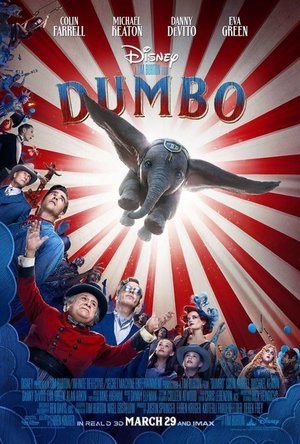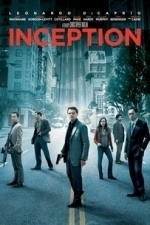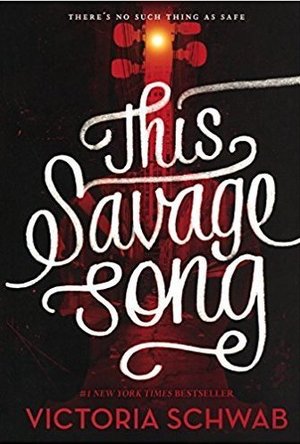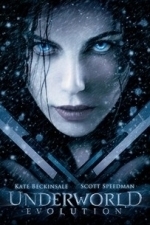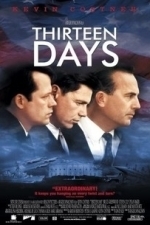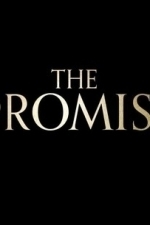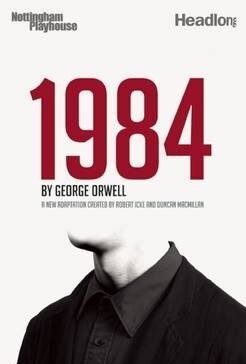Search
Search results
Lee (2222 KP) rated Dumbo (2019) in Movies
Mar 31, 2019
It's set to be a busy year for live action Disney remakes, with Aladdin and The Lion King already lined up for release this year. Kicking things off though, is this reimagining of the 1941 classic Dumbo, with Tim Burton directing.
It's 1919 and Holt Farrier (Colin Farrell) has returned from World War I, arriving by train to join the Medici Brothers Circus, where he worked before the war as a performer. But Holt has a number of issues to contend with on his return, the least of which being the loss one of his arms while in service. He's greeted at the station by his two young children, Milly and Joe, who lost their mother, Holt's wife, to influenza while he was away. On top of that, he learns that while he was away, the cash strapped circus owner, Max Medici (Danny DeVito) decided to sell the horses that were part of Holt's star act. Holt is put in charge of pregnant elephant Jumbo, with Max hoping that the arrival of a cute baby elephant will bring in the much needed crowds. It's a lot for Holt to come to terms with and adjust to.
Soon after, the baby elephant is born. But with clumsy, oversized ears, he's not quite the cute crowd pleaser they had all hoped for. Attempts to hide his ears only end in disaster, and ridicule from the circus crowds. Milly and Joe fall in love with the new arrival, and when they discover that he has the ability to use those big ears for flying, interest in him is quickly renewed.
The flying elephant not only draws in the crowds, but also the attentions of V.A. Vandevere (Michael Keaton), who offers Max a deal for him and his circus troupe to join his huge fancy theme park. It's at this point that the movie should really begin to soar, having introduced the circus family and their new arrival. Unfortunately, the arrival of Vandevere signals a sharp downward spiral in terms of story telling. The circus cast are all but forgotten, with the story focusing instead on the tired, familiar tale of sleazy, greedy businessman who is only interested in money and success, at the expense of the poor, trusting people who believed him.
The computerised Dumbo is simply oozing cuteness and technical wizardry. The eyes and the facial expressions are wonderful and he manages to steal every scene he is in. Every time he takes flight, it is a joy to watch. Unfortunately though, this version of Dumbo is trying to add a lot more to the original story and ends up becoming bit of a drag at times. The human characters are poorly written and mostly forgettable, and the movie really only soars when Dumbo himself does. While trying to steer clear of being a straight up remake, opting instead for the addition of plot and characters, it ultimately loses a lot of the charm. As with the recent remake of Beauty and the Beast, it's another case of style over substance.
It's 1919 and Holt Farrier (Colin Farrell) has returned from World War I, arriving by train to join the Medici Brothers Circus, where he worked before the war as a performer. But Holt has a number of issues to contend with on his return, the least of which being the loss one of his arms while in service. He's greeted at the station by his two young children, Milly and Joe, who lost their mother, Holt's wife, to influenza while he was away. On top of that, he learns that while he was away, the cash strapped circus owner, Max Medici (Danny DeVito) decided to sell the horses that were part of Holt's star act. Holt is put in charge of pregnant elephant Jumbo, with Max hoping that the arrival of a cute baby elephant will bring in the much needed crowds. It's a lot for Holt to come to terms with and adjust to.
Soon after, the baby elephant is born. But with clumsy, oversized ears, he's not quite the cute crowd pleaser they had all hoped for. Attempts to hide his ears only end in disaster, and ridicule from the circus crowds. Milly and Joe fall in love with the new arrival, and when they discover that he has the ability to use those big ears for flying, interest in him is quickly renewed.
The flying elephant not only draws in the crowds, but also the attentions of V.A. Vandevere (Michael Keaton), who offers Max a deal for him and his circus troupe to join his huge fancy theme park. It's at this point that the movie should really begin to soar, having introduced the circus family and their new arrival. Unfortunately, the arrival of Vandevere signals a sharp downward spiral in terms of story telling. The circus cast are all but forgotten, with the story focusing instead on the tired, familiar tale of sleazy, greedy businessman who is only interested in money and success, at the expense of the poor, trusting people who believed him.
The computerised Dumbo is simply oozing cuteness and technical wizardry. The eyes and the facial expressions are wonderful and he manages to steal every scene he is in. Every time he takes flight, it is a joy to watch. Unfortunately though, this version of Dumbo is trying to add a lot more to the original story and ends up becoming bit of a drag at times. The human characters are poorly written and mostly forgettable, and the movie really only soars when Dumbo himself does. While trying to steer clear of being a straight up remake, opting instead for the addition of plot and characters, it ultimately loses a lot of the charm. As with the recent remake of Beauty and the Beast, it's another case of style over substance.
BankofMarquis (1832 KP) rated Inception (2010) in Movies
May 20, 2018
A Modern Classic
I have a confession to make - INCEPTION is one of my favorite Christopher Nolan films - and, perhaps, it is in my list of TOP 10 ALL TIME FAVORITE films, so this might not be a fair and impartial review of the film. To be fair to me, I did make a conscience effort whilst watching this movie to scrape away my previous preconceptions and opinions of this film and just let it wash over me in this "new light" of my blog to see what my reaction is.
My reaction: I LOVE THIS FILM!!!
I was asked how far back do you have to go before you can consider a film a "classic" and, I guess, I'd have to say 2010, for this film - to me - is a classic.
In INCEPTION, Nolan, and his co-writer brother Jonathan Nolan, go into the dreamworld with the premise that we can join in "shared dreams" to extract information from people that are locked away deep in their conscious (or in some cases unconscious) minds. This film deals with the idea of "Inception", planting an idea into someone's mind. This is, in essence, a "heist" film where our team of heroes is constantly at war with the minds they are inhabiting (since they are seen as parasites). The clock is ticking and they must get in and get out before they get lost.
Speaking of time, Nolan - once again - plays with the idea of time in this film. Once you go into a dream, 1 minute is like 1 hour and when you go into a dream of a dream, then 1 minute is like 60 hours and when you go into a dream within a dream within a dream, then...well...you get the idea.
If someone loses their way in this film, it's because they are trying to make logical sense of a dream world that defies physics - and time. My suggestion to you is to let go and let the movie take you to some fantastical places - with some fantastical imagery and plot machinations - that I enjoyed the heck out of.
Helping out this film is that it is impeccably cast. Leonardo DiCaprio is Cobb the head of this group that enters the dream realm. He is perfectly cast and Nolan, and this film, relies on his likeableness, his charm and the feeling that something just isn't quite right with him. All to very good effect. Ellen Page is strong as Ariadne, the rookie of the team that is our eyes and ears into this world. Ken Watanabe brings his typically strong game to the role of Saito - the man that gives the team the job and goes along for the ride. Nolan regular Cillian Murphy is a welcome addition as the person who they are trying to "Incept" and even small parts are filled with wonderful character actors like the late great, Pete Postlethwaite, Tom Berenger and good ol' Michael Caine.
But it is the emergence of two of the co-stars that, up until this film I thought were "fair actors but not great" that really elevates this film for me. Joseph Gordon-Levitt was always the "long haired kid from 3RD ROCK FROM THE SUN", but in this - as Cobb's right-hand man Arthur - he excels and really jumps out of the film as a screen presence. Of course, it really helps him that he has one of the best action sequences - for the most part practically shot - that I have ever scene. And, of course, there's TOM HARDY. He is a movie star and really shows it in the supporting role of Eames. This guy will win an Oscar one day, probably for a film that Nolan Directs him in.
My only quibble - and it is a QUIBBLE - is that I didn't really feel any strong chemistry between Marion Cotillard's Mal and DiCaprio's Cobb. She was supposed to be the big "love of his life" and I just didn't sense that. She was very good - and imposing - as she infiltrated Cobb's mind (which is, I think, the purpose of her character), but I could have used a little more between her and DiCaprio. But...as I say...a quibble.
All in all, a terrific - different - film. One that I am calling a "classic".
Letter Grade: A+
10 stars (out of 10) and you can take that to the Bank(ofMarquis)
My reaction: I LOVE THIS FILM!!!
I was asked how far back do you have to go before you can consider a film a "classic" and, I guess, I'd have to say 2010, for this film - to me - is a classic.
In INCEPTION, Nolan, and his co-writer brother Jonathan Nolan, go into the dreamworld with the premise that we can join in "shared dreams" to extract information from people that are locked away deep in their conscious (or in some cases unconscious) minds. This film deals with the idea of "Inception", planting an idea into someone's mind. This is, in essence, a "heist" film where our team of heroes is constantly at war with the minds they are inhabiting (since they are seen as parasites). The clock is ticking and they must get in and get out before they get lost.
Speaking of time, Nolan - once again - plays with the idea of time in this film. Once you go into a dream, 1 minute is like 1 hour and when you go into a dream of a dream, then 1 minute is like 60 hours and when you go into a dream within a dream within a dream, then...well...you get the idea.
If someone loses their way in this film, it's because they are trying to make logical sense of a dream world that defies physics - and time. My suggestion to you is to let go and let the movie take you to some fantastical places - with some fantastical imagery and plot machinations - that I enjoyed the heck out of.
Helping out this film is that it is impeccably cast. Leonardo DiCaprio is Cobb the head of this group that enters the dream realm. He is perfectly cast and Nolan, and this film, relies on his likeableness, his charm and the feeling that something just isn't quite right with him. All to very good effect. Ellen Page is strong as Ariadne, the rookie of the team that is our eyes and ears into this world. Ken Watanabe brings his typically strong game to the role of Saito - the man that gives the team the job and goes along for the ride. Nolan regular Cillian Murphy is a welcome addition as the person who they are trying to "Incept" and even small parts are filled with wonderful character actors like the late great, Pete Postlethwaite, Tom Berenger and good ol' Michael Caine.
But it is the emergence of two of the co-stars that, up until this film I thought were "fair actors but not great" that really elevates this film for me. Joseph Gordon-Levitt was always the "long haired kid from 3RD ROCK FROM THE SUN", but in this - as Cobb's right-hand man Arthur - he excels and really jumps out of the film as a screen presence. Of course, it really helps him that he has one of the best action sequences - for the most part practically shot - that I have ever scene. And, of course, there's TOM HARDY. He is a movie star and really shows it in the supporting role of Eames. This guy will win an Oscar one day, probably for a film that Nolan Directs him in.
My only quibble - and it is a QUIBBLE - is that I didn't really feel any strong chemistry between Marion Cotillard's Mal and DiCaprio's Cobb. She was supposed to be the big "love of his life" and I just didn't sense that. She was very good - and imposing - as she infiltrated Cobb's mind (which is, I think, the purpose of her character), but I could have used a little more between her and DiCaprio. But...as I say...a quibble.
All in all, a terrific - different - film. One that I am calling a "classic".
Letter Grade: A+
10 stars (out of 10) and you can take that to the Bank(ofMarquis)
Dana (24 KP) rated This Savage Song (Monsters of Verity, #1) in Books
Mar 23, 2018
This is my first book in the 10 Books in 10 Days Challenge presented by Epic Reads.
This book has such an interesting concept in the way it takes the standard Good vs Evil and blurs the lines completely. There are the standard "monsters" and "humans" but it gets hard to tell who is actually at fault in the war that is brewing in the book.
I loved the characters in this book. If I were to rate the book on characters alone, I would have given it a five star review, but alas, I did not. I really enjoyed how August and Kate were both trying to be something they weren't in order to impress their families, but then when they met each other, they weren't as pressured to do that. They rescued each other from their own self destruction.
There were a few really subtle moments of romance, but it wasn't the main focus of the novel, which is something I appreciated a lot. Too often in these dystopian fantasy novels, the girl needs a male romantic lead to make her feel whole and give her some amount of power. Not here!! Kate is already strong as hell!
It was cool to see them anchoring each other through talking. When either one of them was going to break, they told each other to tell them something, anything, and that was just one of those moments that were so emotional. They start repeating each other and caring for one another, something that I don't think either of them had really had before.
I loved all of August's quotes about humanity and what makes a person human. They were very well written!!
I can honestly keep going on the characters and do a character study on these two, but I am not going to do that. (At least not right now.)
I want Ilsa to be my best friend (even though she's kinda creepy at times) and Allegro to cuddle with. It was so freaking cute how the cat was brought in to further humanize August and Ilsa. It reminded me of my cat too.
The monsters were creepy as hell. It actually made me a little nervous in the dark for a bit while I was reading it. (To be honest, I don't get scared of the dark, so that just amps the creepy factor of this book.)
I loved all of the descriptions of sound, music and silence. Because they are all so important and ingrained into the story itself, it was cool whenever Victoria Schwab would bring attention to them in more artistic and melodic ways was just beautiful. I also loved all of the star imagery (but that's just because I am obsessed with the stars.)
I really want to explore the rest of the world and see what else is in store for these characters.
Overall, very well written novel. There were a few moments where it felt a little slow to me, but those were pretty few and far between.
Plot/joke spoilers in the rest of the review.
WTF happened in the freaking Elegy? Did a new Sunai/Malaki just emerge looking like Kate's mom?!?!?!? That is just bananas!!
Also, Leo, wtf dude? You're such a prick. Why would you do that?
Sunai's favorite food = SOUL FOOD (This line was freaking brilliant.)
This book has such an interesting concept in the way it takes the standard Good vs Evil and blurs the lines completely. There are the standard "monsters" and "humans" but it gets hard to tell who is actually at fault in the war that is brewing in the book.
I loved the characters in this book. If I were to rate the book on characters alone, I would have given it a five star review, but alas, I did not. I really enjoyed how August and Kate were both trying to be something they weren't in order to impress their families, but then when they met each other, they weren't as pressured to do that. They rescued each other from their own self destruction.
There were a few really subtle moments of romance, but it wasn't the main focus of the novel, which is something I appreciated a lot. Too often in these dystopian fantasy novels, the girl needs a male romantic lead to make her feel whole and give her some amount of power. Not here!! Kate is already strong as hell!
It was cool to see them anchoring each other through talking. When either one of them was going to break, they told each other to tell them something, anything, and that was just one of those moments that were so emotional. They start repeating each other and caring for one another, something that I don't think either of them had really had before.
I loved all of August's quotes about humanity and what makes a person human. They were very well written!!
I can honestly keep going on the characters and do a character study on these two, but I am not going to do that. (At least not right now.)
I want Ilsa to be my best friend (even though she's kinda creepy at times) and Allegro to cuddle with. It was so freaking cute how the cat was brought in to further humanize August and Ilsa. It reminded me of my cat too.
The monsters were creepy as hell. It actually made me a little nervous in the dark for a bit while I was reading it. (To be honest, I don't get scared of the dark, so that just amps the creepy factor of this book.)
I loved all of the descriptions of sound, music and silence. Because they are all so important and ingrained into the story itself, it was cool whenever Victoria Schwab would bring attention to them in more artistic and melodic ways was just beautiful. I also loved all of the star imagery (but that's just because I am obsessed with the stars.)
I really want to explore the rest of the world and see what else is in store for these characters.
Overall, very well written novel. There were a few moments where it felt a little slow to me, but those were pretty few and far between.
Plot/joke spoilers in the rest of the review.
WTF happened in the freaking Elegy? Did a new Sunai/Malaki just emerge looking like Kate's mom?!?!?!? That is just bananas!!
Also, Leo, wtf dude? You're such a prick. Why would you do that?
Sunai's favorite food = SOUL FOOD (This line was freaking brilliant.)
Gareth von Kallenbach (980 KP) rated Underworld: Evolution (2006) in Movies
Aug 14, 2019
The battle between the Death Dealers (Vampires) and Lychans (Werewolves) continues in Underworld Evolution, the sequel to the smash “Underworld” that detailed the battles between the two horror mainstays. The sequel picks up shortly after the film and deals with Selene (Kate Beckinsale), and Michael (Scott Speedman), on the run after Selene was forced to turn on the Vampires following events at the conclusion of the previous film.
Of course being a Vampire traveling with a Vampire/Werewolves hybrid is not an easy thing, especially when Selene can only move around at night and must seek refuge from daylight. Through a series of flashbacks, we learn that the war between Lychans and Death Dealers began centuries ago, when two brothers each heading one faction of the conflict were drawn to a decisive battle. The losing Lychan brother, William, is imprisoned for all ages in a specially designed tomb, thanks to his brother Marcus’s insistence that he would only help capture him, if he were to remain alive.
Since William is capable of utter destruction, his location is a closely guarded secret for centuries that is until Marcus re-emerges and seeks to locate Selene. Marcus upon emerging from hibernation learns what Selene has done, and is convinced she has betrayed her own kind, unaware of the real reasons behind her actions. In short order, Marcus, Selene, and Michael play a deadly game of cat and mouse with each trying to unlock the mystery of Williams’s location. Marcus wants to exploit the power of William while Selene to protect the world from the evil that William and his followers would represent.
Along the way, there are plenty of battles, odd characters, and romance to keep most viewers entertained, which leads up to an action packed finale, that for me was the high point of the film. The plot has its share of holes but also deals with a series of complexities as it attempts to take the topics of bloodlines, centuries of history, and mythos in a tight 100 minute package. The two leads work well with one another though their do not have the most dynamic chemistry ever seen on screen. For this type of film, it does work as one does not come to a monster film expecting great acting, story, or characterization.
What Underworld Evolution has going for it, are good effects, a few good action moments and a plot, that at times tricky for the casual viewer to follow, more than surpasses the average storyline for the genre. The tight pacing of the film by Director Len Wiseman keeps the film moving a clip that was much brisker than the original and allowed the film to get to the highlights quickly and not be weighed down by fluff.
The finale as I mentioned was the highlight for me, as the buildup to that point was at times, slow, and had me wishing for more. That being said, the final 15 minutes of the film more than saved it, and got more than a few cheers from the audience at my press screening.
While it would be easy to find faults with the film, the important thing to remember is the spirit and intention of the film. They were not out to make classic cinema, they were out to make a fun and entertaining monster film, blemishes and all. In that, Underworld Evolution succeeds.
Of course being a Vampire traveling with a Vampire/Werewolves hybrid is not an easy thing, especially when Selene can only move around at night and must seek refuge from daylight. Through a series of flashbacks, we learn that the war between Lychans and Death Dealers began centuries ago, when two brothers each heading one faction of the conflict were drawn to a decisive battle. The losing Lychan brother, William, is imprisoned for all ages in a specially designed tomb, thanks to his brother Marcus’s insistence that he would only help capture him, if he were to remain alive.
Since William is capable of utter destruction, his location is a closely guarded secret for centuries that is until Marcus re-emerges and seeks to locate Selene. Marcus upon emerging from hibernation learns what Selene has done, and is convinced she has betrayed her own kind, unaware of the real reasons behind her actions. In short order, Marcus, Selene, and Michael play a deadly game of cat and mouse with each trying to unlock the mystery of Williams’s location. Marcus wants to exploit the power of William while Selene to protect the world from the evil that William and his followers would represent.
Along the way, there are plenty of battles, odd characters, and romance to keep most viewers entertained, which leads up to an action packed finale, that for me was the high point of the film. The plot has its share of holes but also deals with a series of complexities as it attempts to take the topics of bloodlines, centuries of history, and mythos in a tight 100 minute package. The two leads work well with one another though their do not have the most dynamic chemistry ever seen on screen. For this type of film, it does work as one does not come to a monster film expecting great acting, story, or characterization.
What Underworld Evolution has going for it, are good effects, a few good action moments and a plot, that at times tricky for the casual viewer to follow, more than surpasses the average storyline for the genre. The tight pacing of the film by Director Len Wiseman keeps the film moving a clip that was much brisker than the original and allowed the film to get to the highlights quickly and not be weighed down by fluff.
The finale as I mentioned was the highlight for me, as the buildup to that point was at times, slow, and had me wishing for more. That being said, the final 15 minutes of the film more than saved it, and got more than a few cheers from the audience at my press screening.
While it would be easy to find faults with the film, the important thing to remember is the spirit and intention of the film. They were not out to make classic cinema, they were out to make a fun and entertaining monster film, blemishes and all. In that, Underworld Evolution succeeds.
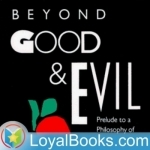
Beyond Good and Evil by Friedrich Nietzsche
Podcast
Beyond Good and Evil, by Friedrich Nietzsche A searing indictment of concepts like “truth” and...
Darren (1599 KP) rated Thirteen Days (2000) in Movies
Aug 26, 2019
Verdict: History Lesson
Story: Thirteen Days starts like a normal day in the Kennedy administration, his assistant Kenny O’Donnell (Costner) joins the President John F Kennedy (Greenwood), his brother Robert F Kennedy (Culp) and advisers from every side for an emergency meeting.
The meeting is called to discuss the appearance of nuclear warheads in Cuba, believing Russia are moving to a closer position which could destroy large parts of America in minutes. What follows in Kenny trying to help JFK make the smartest decision, despite how many different people are advising with multiply options, all leading to one of the most intense stand offs in military history.
Thoughts on Thirteen Days
Characters – Kenny O’Donnell is the assistant advisor to the President, he gives him advice which would see him make decisions which would support the image of the President and the country instead of agree with the fast track answers which would see America go to war, he is the man that people turn to if they are not prepared to challenge the President’s decisions. President John F Kennedy is the man in the middle of the situation, the man that needs to make the final decision after taking on all the advice from his experts, he wants to remain in control of the situation to the best of his ability. Robert F Kennedy is one of the men advising his brother, he knows how John thinks and knows how the help him make the right decisions to remain calm and in control. We do have plenty of different advisors who are trying to offer a plan to what could make this stand off end quicker.
Performances – Kevin Costner is always entertaining to watch in a political movie, this is no different as he plays the pivot to everything going on. Bruce Greenwood as the President is great to watch through the film, with the whole cast looking like they would have been the people they are playing.
Story – The story here follows the events around the Cuba Mission Crisis, from the point of view of the Americans. This does break down to be a political thriller that does keep us on edge as we see all the potential ideas that were thrown out which could have seen the world in a different place if different outcomes had been used, while this is a 2 hour story, we only focus on the different ideas, which is interesting to see. Each person could have their own agenda which could show the mindset of the public during the events. We could have more intense moments, but it just doesn’t really do that much more, which doesn’t display just how dangerous the event could have been.
History – This is a big historical moment and it does show how the people in power were put on panic station when the events started to unfold.
Settings – The film uses the political settings for the most part, which does show us just how the people stayed together through the events of the crisis.
Scene of the Movie – Putting the Admiral in his place.
That Moment That Annoyed Me – We could have had more intense sequences.
Final Thoughts – This is an interesting look at one of the biggest stand offs in modern history, we do see how it could have gone very differently and how everything unfolded.
Overall: Interesting look at history.
Story: Thirteen Days starts like a normal day in the Kennedy administration, his assistant Kenny O’Donnell (Costner) joins the President John F Kennedy (Greenwood), his brother Robert F Kennedy (Culp) and advisers from every side for an emergency meeting.
The meeting is called to discuss the appearance of nuclear warheads in Cuba, believing Russia are moving to a closer position which could destroy large parts of America in minutes. What follows in Kenny trying to help JFK make the smartest decision, despite how many different people are advising with multiply options, all leading to one of the most intense stand offs in military history.
Thoughts on Thirteen Days
Characters – Kenny O’Donnell is the assistant advisor to the President, he gives him advice which would see him make decisions which would support the image of the President and the country instead of agree with the fast track answers which would see America go to war, he is the man that people turn to if they are not prepared to challenge the President’s decisions. President John F Kennedy is the man in the middle of the situation, the man that needs to make the final decision after taking on all the advice from his experts, he wants to remain in control of the situation to the best of his ability. Robert F Kennedy is one of the men advising his brother, he knows how John thinks and knows how the help him make the right decisions to remain calm and in control. We do have plenty of different advisors who are trying to offer a plan to what could make this stand off end quicker.
Performances – Kevin Costner is always entertaining to watch in a political movie, this is no different as he plays the pivot to everything going on. Bruce Greenwood as the President is great to watch through the film, with the whole cast looking like they would have been the people they are playing.
Story – The story here follows the events around the Cuba Mission Crisis, from the point of view of the Americans. This does break down to be a political thriller that does keep us on edge as we see all the potential ideas that were thrown out which could have seen the world in a different place if different outcomes had been used, while this is a 2 hour story, we only focus on the different ideas, which is interesting to see. Each person could have their own agenda which could show the mindset of the public during the events. We could have more intense moments, but it just doesn’t really do that much more, which doesn’t display just how dangerous the event could have been.
History – This is a big historical moment and it does show how the people in power were put on panic station when the events started to unfold.
Settings – The film uses the political settings for the most part, which does show us just how the people stayed together through the events of the crisis.
Scene of the Movie – Putting the Admiral in his place.
That Moment That Annoyed Me – We could have had more intense sequences.
Final Thoughts – This is an interesting look at one of the biggest stand offs in modern history, we do see how it could have gone very differently and how everything unfolded.
Overall: Interesting look at history.
Gareth von Kallenbach (980 KP) rated The Promise (2017) in Movies
Jul 11, 2019
Roughly a year ago, I found myself in a heated exchange with a friend about full and appropriate representation of people and history in films. I discussed the merits of expanding the scope beyond films about slavery and segregation with respect to African-Americans and stories of despair for other marginalized groups. It is, for me, demeaning to a people’s contributions in society and trivializes experiences. After engaging in what seemed to be an hour, my friend focused more on what she had to say that considering what I was addressing. It proved true when she stated “Well… at least black people have movies about slavery! You should be happy. We don’t even have a movie about the Armenian Genocide!” I was shocked, momentarily. I had never stated that one group deserved more of the spotlight or one’s history is more important that another, just that we need to have appropriate representation and inclusion of stories. All of our stories should be told and shared, especially the ones that are not widely known, understood, or even having a place within social studies courses in our public schools.
I knew of the Armenian Genocide and had a general understanding about the atrocities committed by the Ottoman Empire. There are several international films that address what took place or have the Genocide as part of the story. Even My Big Fat Greek Wedding makes reference to how Greeks were brutalized by the Turks during the period. What we were missing, at least in the realm of American Cinema, was a representation for US audiences to witness the horrors that these people fell victim to and, for some, were able to survive. In The Promise, audiences will get a history lesson about man’s inhumanity to man.
When I first heard that this film was in production, I was interesting in how it would pan out. Would it be truthful, as painful as it may be? Would they overdo certain aspects? How much would they play with the truth? The filmmakers faced the same problems as those who brought forth Schindler’s List, The Pianist, and Life is Beautiful: How do you approach telling the story of genocide? How do you draw people in to a story that they may not be familiar with? Are people ready?
Summaries of the film that I read online made it seem as though this would be an Armenian version of Pearl Harbor in that this was a love story in the foreground of a film that features violence in the background. The summaries were misleading, maybe by design or maybe by mistake. The Promise, stars Oscar Isaac (Star Wars: The Force Awakens) as a young Armenia medical student, and Christian Bale (The Dark Knight) as a journalist for the associated press reporting on developments in the Ottoman Empire as war breaks out. The film whose description touts a love triangle in the midst of the Great War is far from what this films discusses and presents. There is a love story, however, it is not what the film is about or what is able to get the attention of the viewers.
The film reveals the deep held animosity of Armenians and other minority groups in the Ottoman Empire. It demonstrates the depth of mistrust and mistreatment of people who cast as “the other.” It is not simplistic in approach nor relying on over-the-top examples of violence in order for those watching to feel something. The development of events and characters permits the audience to connect with each of the characters, their families, their circumstances, and look for any moment in which they can escape the violence that is being committed to them. In no way does this film minimize what the victims went through. It doesn’t trivialize their experience in order to gain one’s attention.
The Promise satisfies the need for a discussion to emerge allowing for a truer examination of the genocide’s place in world history and within the framing of World War I. It presents a more representative picture of what people bore witness to or experienced themselves. With history, we are continuously searching for the truth and ensuring that history itself does not remained buried or ignored. This films serves the purpose in ensuring that more people are aware of not only the Armenian genocide, but all of the moving pieces that come with people fighting against an injustice or violence that is committed upon them because they are seen as less than or undesirable. It is my hope that with this film, studios see the necessity of bringing more stories of struggle, survival, and the will of humanity to overcome hardship and violence to audiences. The Promise although highly overdue, is essential, poignant, timely, and necessary in order for all of us to see that people are not forgotten.
I knew of the Armenian Genocide and had a general understanding about the atrocities committed by the Ottoman Empire. There are several international films that address what took place or have the Genocide as part of the story. Even My Big Fat Greek Wedding makes reference to how Greeks were brutalized by the Turks during the period. What we were missing, at least in the realm of American Cinema, was a representation for US audiences to witness the horrors that these people fell victim to and, for some, were able to survive. In The Promise, audiences will get a history lesson about man’s inhumanity to man.
When I first heard that this film was in production, I was interesting in how it would pan out. Would it be truthful, as painful as it may be? Would they overdo certain aspects? How much would they play with the truth? The filmmakers faced the same problems as those who brought forth Schindler’s List, The Pianist, and Life is Beautiful: How do you approach telling the story of genocide? How do you draw people in to a story that they may not be familiar with? Are people ready?
Summaries of the film that I read online made it seem as though this would be an Armenian version of Pearl Harbor in that this was a love story in the foreground of a film that features violence in the background. The summaries were misleading, maybe by design or maybe by mistake. The Promise, stars Oscar Isaac (Star Wars: The Force Awakens) as a young Armenia medical student, and Christian Bale (The Dark Knight) as a journalist for the associated press reporting on developments in the Ottoman Empire as war breaks out. The film whose description touts a love triangle in the midst of the Great War is far from what this films discusses and presents. There is a love story, however, it is not what the film is about or what is able to get the attention of the viewers.
The film reveals the deep held animosity of Armenians and other minority groups in the Ottoman Empire. It demonstrates the depth of mistrust and mistreatment of people who cast as “the other.” It is not simplistic in approach nor relying on over-the-top examples of violence in order for those watching to feel something. The development of events and characters permits the audience to connect with each of the characters, their families, their circumstances, and look for any moment in which they can escape the violence that is being committed to them. In no way does this film minimize what the victims went through. It doesn’t trivialize their experience in order to gain one’s attention.
The Promise satisfies the need for a discussion to emerge allowing for a truer examination of the genocide’s place in world history and within the framing of World War I. It presents a more representative picture of what people bore witness to or experienced themselves. With history, we are continuously searching for the truth and ensuring that history itself does not remained buried or ignored. This films serves the purpose in ensuring that more people are aware of not only the Armenian genocide, but all of the moving pieces that come with people fighting against an injustice or violence that is committed upon them because they are seen as less than or undesirable. It is my hope that with this film, studios see the necessity of bringing more stories of struggle, survival, and the will of humanity to overcome hardship and violence to audiences. The Promise although highly overdue, is essential, poignant, timely, and necessary in order for all of us to see that people are not forgotten.
Jamie (131 KP) rated 1984 Nineteen Eighty-Four in Books
Jun 4, 2017
Overwhelmingly bleak (1 more)
Stars slow and a little bit didactic
A true nightmare world, a dystopian classic
Winston is our everyman, a middle aged average male living under the heel of a totalitarian regime. His work is bland, his food is bland, his every day routine is bland. Winston is losing it, he wonders about the world that was before the party and resists in small ways. He ponders about the subtle ways that the party exerts it’s control, by perpetual war, by rewriting history, by lying so blatantly that the members of the party have to accept the lies as truth. Winston dreams of revolution and finds himself seeking out others likes him.
Nineteen Eighty-Four was not an easy ready by any means, it’s startlingly brutal. The beginning starts off rather slow as the readers gets to know Winston, the way he thinks and learns about his every day routine and are introduced to key characters. The middle of the book picks up, but it breaks up the pacing of the novel due to the fact that it essentially turns into an essay that outlines the structure of the party and the moral implications of it’s actions. While info dumps can be a bit disjointing to read, I could bear with it for this novel. The third half of the novel caught me off guard and it spun wildly out of control. I loved it, even when I found it difficult to digest. This is what made the book so brilliant, it doesn’t just tell you about right and wrong and then wrap things up nicely, the horrible reality of the book comes crashing down on both Winston and the reader’s head in full force.
The power structure of the party is just downright diabolical. I could think of any other way to describe it; the method of control, the reasons for maintaining such a strict social order, the sheer scale of the party’s reach – all of it was terrifying when taken as a whole. There were points in the second half of the novel where I had to put the book down because it was stressing me out too much, and this was a first for me. I now understand fully what folks mean when they label something as “Orwellian,” and why this novel is hailed as one of the very best of the dystopia genre. Hell, there are others that I read that I thought were bleak, but none quite to this degree. Nineteen Eighty-Four makes other books in the dystopia genre seem like lighthearted adventures novels.
The novel is extremely effective in the delivery of it’s core message about government control and humanity by creating a potential future that is harrowing, particularly because of it’s plausibility, as a warning to all. This is the type of book that will stick with me for a long time and I’m glad I finally sat down to read it.
Nineteen Eighty-Four was not an easy ready by any means, it’s startlingly brutal. The beginning starts off rather slow as the readers gets to know Winston, the way he thinks and learns about his every day routine and are introduced to key characters. The middle of the book picks up, but it breaks up the pacing of the novel due to the fact that it essentially turns into an essay that outlines the structure of the party and the moral implications of it’s actions. While info dumps can be a bit disjointing to read, I could bear with it for this novel. The third half of the novel caught me off guard and it spun wildly out of control. I loved it, even when I found it difficult to digest. This is what made the book so brilliant, it doesn’t just tell you about right and wrong and then wrap things up nicely, the horrible reality of the book comes crashing down on both Winston and the reader’s head in full force.
The power structure of the party is just downright diabolical. I could think of any other way to describe it; the method of control, the reasons for maintaining such a strict social order, the sheer scale of the party’s reach – all of it was terrifying when taken as a whole. There were points in the second half of the novel where I had to put the book down because it was stressing me out too much, and this was a first for me. I now understand fully what folks mean when they label something as “Orwellian,” and why this novel is hailed as one of the very best of the dystopia genre. Hell, there are others that I read that I thought were bleak, but none quite to this degree. Nineteen Eighty-Four makes other books in the dystopia genre seem like lighthearted adventures novels.
The novel is extremely effective in the delivery of it’s core message about government control and humanity by creating a potential future that is harrowing, particularly because of it’s plausibility, as a warning to all. This is the type of book that will stick with me for a long time and I’m glad I finally sat down to read it.
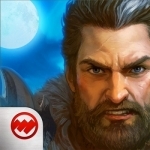
Gods and Glory: Throne wars
Games and Stickers
App
Throw yourself into intense and tactical real-time fantasy PvP strategy. Clash with warriors...

Los Angeles Stories
Book
A Los Angeles Times's and Southern California Indie Bookseller Association's Bestseller! Los Angeles...
